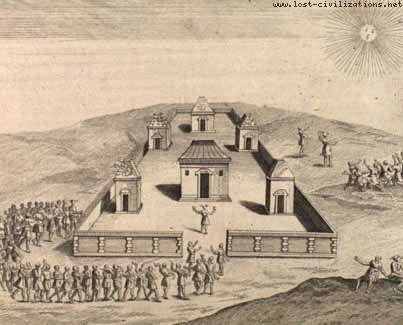It was performed every year on June 21, that is, in the winter solstice of the Southern Hemisphere, in the great Cuzco Main Plaza.

In the Andean mythology it was considered that Incas were descendants of the Sun, therefore, they had to worship it annually with a sumptuous celebration. More over, the festivity was carried out by the end of the potato and maize harvest in order to thank the Sun for the abundant crops or otherwise in order to ask for better crops during the next season.
Besides, it is during the solstices when the Sun is located in the farthest point from the earth or vice versa, on this date the Quechuas (native people of the Andes who speak “quechua” language) had to perform diverse rituals in order to ask the Sun not to abandon its children.

Preparations had to be carried out in the Koricancha (Sun Temple), in the Aqllawasi (House of Chosen Women), and in the Haukaypata or Wakaypata that was the northeastern sector of the great Main Square. Some days before the ceremony, all the population had to practice fast and sexual abstinence. Before dawn on June 21st the Cusquenian nobility, presided over by the Inca and the Willaq Uma (High Priest), were located on the Haukaypata (the Plaza’s ceremonial portion), the remaining noble population were placed on the Kusipata (southwestern portion). Prior to this the “Mallki” (mummies of noble ancestors) were brought and they were located in privileged sectors so that they could witness the ceremony.
At sunrise, the population had to greet the Sun God with the “much’ay” (“mocha” in its Spanish form) sending forth-resounding kisses offered symbolically with the fingertips. After all that, people sang in tune solemn canticles in a low voice that later were transformed into their “wakay taky” (weepy songs), arriving like this to an emotional and religious climax.
Subsequently, the Son of the Sun (the Inca king), used to take in his two hands two golden ceremonial tumblers called “akilla” containing “Aqha” (chicha = maize beer) made inside the Aqllawasi. The beverage of the tumbler in the right hand was offered to the Sun and then poured into a golden channel communicating the Plaza with the Sun Temple. The Inca drank a sip of chicha from the other tumbler, the remaining was then drank in sips by the noblemen close to him. Later, chicha was offered to every attendant.
Some historians suggest that this ceremony was started inside the Coricancha in presence of the Sun representation that was made of very polished gold that at the sunrise was reflected with a blinding brilliance. Later the Inca, along with his retinue, went toward the great Plaza through the “Intik’iqllu” or “Street of the Sun” (present-day Loreto street) in order to witness the llama sacrifice.
During this most important religious ceremony in Incan times, the High Priest had to perform the llama sacrifice offering a completely black or white llama. With a sharp ceremonial golden knife called “Tumi” he had to open the animal’s chest and with his hands pulled out its throbbing heart, lungs and viscera, so that observing those elements he could foretell the future. Later, the animal and its parts were completely incinerated.
After the sacrifice, the High Priest had to produce the Sacred Fire. Staying in front of the Sun he had to get its rays in a concave gold medallion that contained some soft or oily material in order to produce the fire that had to be kept during next year in the Koricancha and Aqllawasi.
Subsequently the priests offered the Sanqhu that was something like “holy bread” prepared from maize flour and blood of the sacrificed llama; its consumption was entirely religious as a Christian host is.
Once that all ritual stages of the Inti Raymi were finished, all the attendants were located in the southwestern Plaza’s sector named Kusipata (Cheer Secto” present-day Plaza del Regocijo) where after being nourished, people were entertained with music, dances and abundant chicha.
Nowadays, the Inti Raymi is staged annually in Saqsaywaman on June 24th with the participation of hundreds of actors wearing typical outfits. It’s a great opportunity to imagine the life at the Incas time.
CITIES AND VILLAGES
Not many people lived in the Incan cities. People lived in the nearby villages and traveled into town for festivals or business.
The city was mainly used for the government. All the records for nearby villages were reported by their leaders and recorded in the city by the quipucamayoc. About the only people who lived in the city were the metalworkers, carpenters, weavers and other crafters who made artwork for the temples. These people lived in the artisans’ quarters. Outside of the cities were the government storehouses and soldiers’ barracks.
In every major Inca city, the Sapa Inca had a palace for use when he visited the city. On those grounds were the convents for the Sun Virgins and houses for servants. The buildings on the grounds were single storied edifices, built of stone with a thatched grass roof. Their only entrance was to the courtyard that they were on.
ECONOMY
Everyone worked except for the very young and the very old. Children worked by scaring away animals from the crops and helping in the home.
About 2/3 of a farmer’s goods would be shared by a tax system, and the rest were for keeps. Some of the goods would be distributed to others, goods would be received in return, and the rest was stored in government storehouses or sacrificed to the gods.